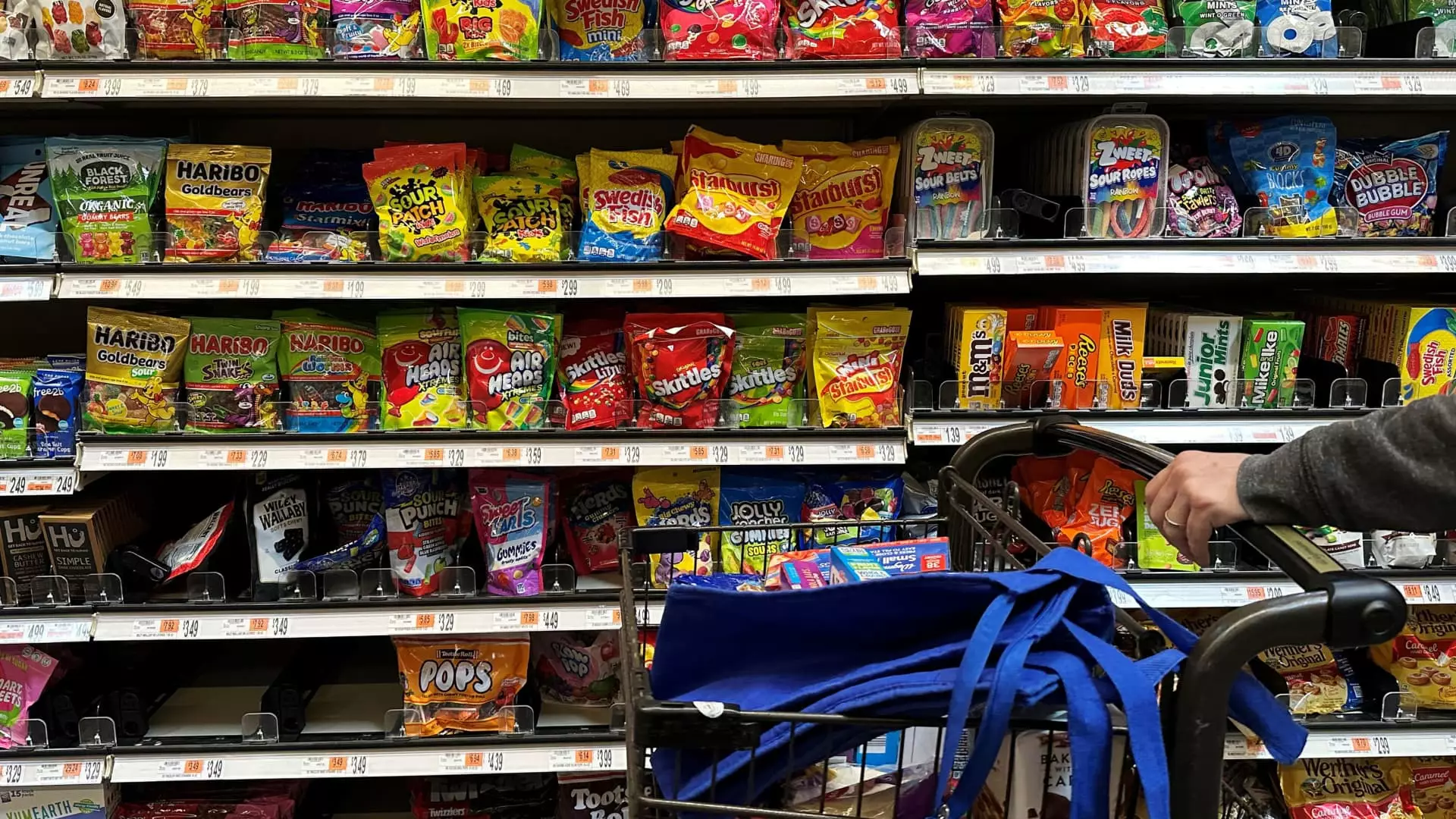The vibrant colors that once filled the aisles of grocery stores are on the verge of disappearing, thanks to the FDA’s impending ban on petroleum-based synthetic dyes. This decision, while hailed by some as long overdue, poses significant implications for consumer perceptions, food manufacturers, and, most importantly, the health of American children. The recent dialogue around food dyes has sparked renewed scrutiny of the food industry’s practices, and it’s about time.
The Toxic Reality of Synthetic Dyes
American consumers have unwittingly exposed themselves to a toxic stew of synthetic chemicals masquerading as food products. For decades, companies have employed bright colors—like the glaring fluorescent red of Flamin’ Hot Cheetos—to attract consumers, especially children. FDA Commissioner Marty Makary pointed out that the prevalence of artificial colors in children’s diets has contributed to a growing concern about chronic diseases and behavioral issues, including hyperactivity. The Lancet study he cited unequivocally correlates artificial colors with increased hyperactivity, making it evident that these pigments serve more than just aesthetic purposes; they materially impact young minds.
It’s a revelatory moment: banning these synthetic concoctions isn’t merely an act of regulatory finesse; it’s a glaring indictment of an industry that prioritizes flashy marketing over the well-being of its youngest consumers. Companies like PepsiCo and General Mills, which have long defended their use of artificial dyes, must now reckon with the reality that consumer trust hinges on a commitment to health over shelf appeal.
A Market Disruption in the Making
Despite industry pushback claiming that evidence is lacking for a comprehensive ban, the writing is on the wall. The FDA is poised to lead a frontal assault on synthetic dyes, proposing natural alternatives that are not only safer but more palatable. It’s true that reformulating recipes to exclude synthetic dyes will be a Herculean task for many food giants, but is it not an opportune moment to rethink what goes into our food?
Natural colorants like beet juice or turmeric might not create the same ostentatious radiance as synthetic dyes, but that comes with a dual benefit: improved safety and an image overhaul that resonates with health-conscious consumers. As food brands grapple with these changes, the sector could transform significantly, redefining norms about product appearance and ingredients.
Positive Economic Implications
A key argument against the shift has been economic feasibility. Detractors claim natural dyes would inflate production costs, resulting in higher prices. However, international precedent proves otherwise. Countries that have already made this shift have not only maintained but often enhanced consumer loyalty without excessive spikes in pricing. By rejecting the cynicism of profit over people, companies can evolve without alienating their market share. Moreover, manufacturers like McCormick stand poised to capitalize on this transition, which spells growth opportunities for businesses concerned with public health.
The Outdated Pendulum of Reform
While consumer advocacy has pushed some brands to eliminate artificial dyes voluntarily—Kraft Heinz reformulated its iconic mac and cheese, only to backtrack—this climate of constant back-and-forth calls into question the seriousness of corporate commitment towards health. The FDA’s move toward a more regulated approach could break this cycle of incoherent actions and lead to a more consistent commitment to reformulation.
In an era where manufacturers should embrace transparency and ethical standards, this ban represents both a challenge and an opportunity for the food industry to reshape its narrative. If they fall short yet again in meeting consumer expectations, their reputations may face irreparable harm.
Politics and Public Health Intersect
The urgency exemplified by Health Secretary Robert F. Kennedy Jr.’s call to action indicates a new political will to confront corporate irresponsibility in food manufacturing. While the FDA has traditionally been seen as a toothless entity, these new regulations offer a glimpse of potential change under Kennedy’s leadership. However, a nuanced approach is essential; while eliminating synthetic dyes is a positive step, it cannot be a panacea for America’s deeper health crises.
The government’s involvement in public health shouldn’t end with just managing food colorings; it should extend into the broader regulatory landscape that governs food safety and nutritional quality. It is encouraging to see part of the larger health picture being painted, but we must demand further measures to safeguard the health nuances facing our population.
As this transition unfolds, the consequences—both beneficial and challenging—will be a critical litmus test for the food industry. It is a moment in which choices matter, and the stakes could not be higher for the health of future generations.

